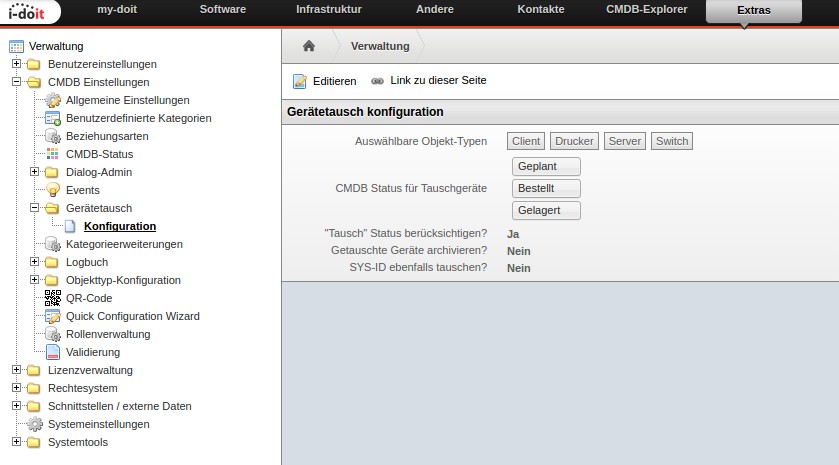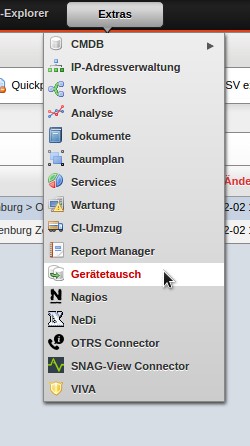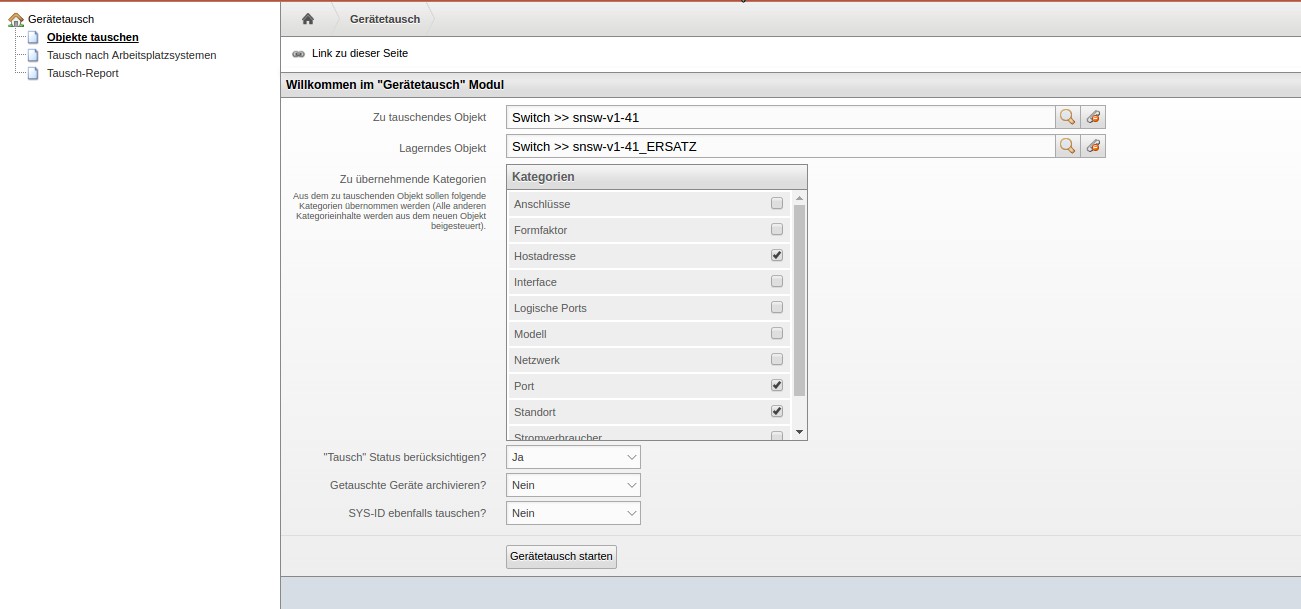SNAG-View Application Monitoring
With SNAG-View, application monitoring can be set up very easily and very comprehensively!
Using the ticket system Znuny as an example, we show you how deeply you can monitor an application.
Here you will find our monthly tips to improve your OTRS, i-doit, SNAG-View and NeDi configuration. If you need support in setting up your systems or need special adaptations, then simply contact us at +49 441 390 10 10 40 or send us an e-mail, we will be happy to advise you.
More than 100 customers from all areas of business and public administration trust our software solutions and services.
by Martin Haubold
The free "Device Exchange" add-on module offers a fast and convenient approach to replacing devices. Imagine the following scenario: A switch which is in use and well-documented fails; it needs to be replaced by another switch. The second switch also exists in the CMDB and is documented as completely as possible (model, accounting, location, status).

Before you can start the exchange, the desired object type must be enabled in the device exchange configuration. You can also select the categories which are exchanged by default.

The module can be found below "Tools". If this is not the case, the authorisations for the module may be missing.

In the "Exchange objects" module, you now select the two switches to be exchanged. The checkboxes set in the configuration can be edited again at this point

After clicking on "Exchange devices" the exchange process starts; a log is then displayed. The stored switch has now adopted the selected category entries of the original switch. The defective switch is assigned a CMDB status of "Replaced".

Using the Device Exchange module can save a great deal of time in the case of more complex categories (network, ports).